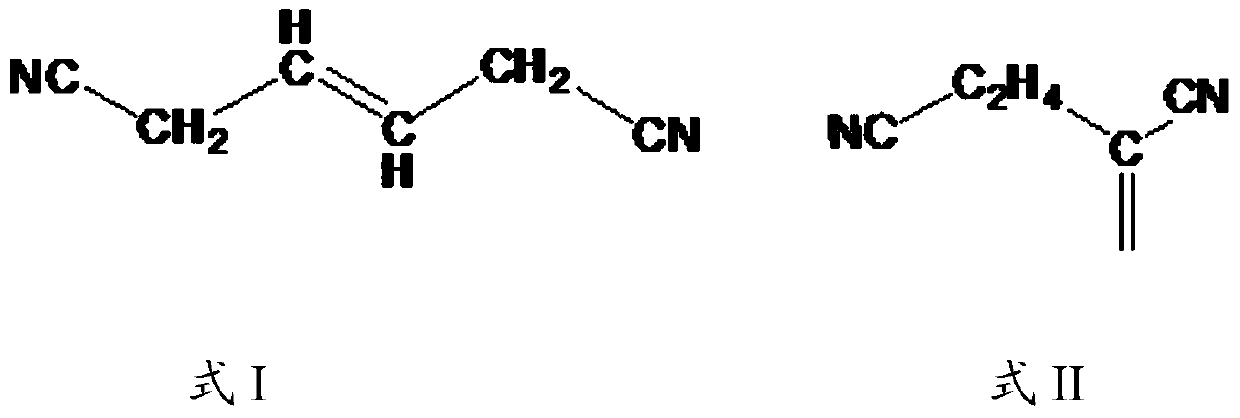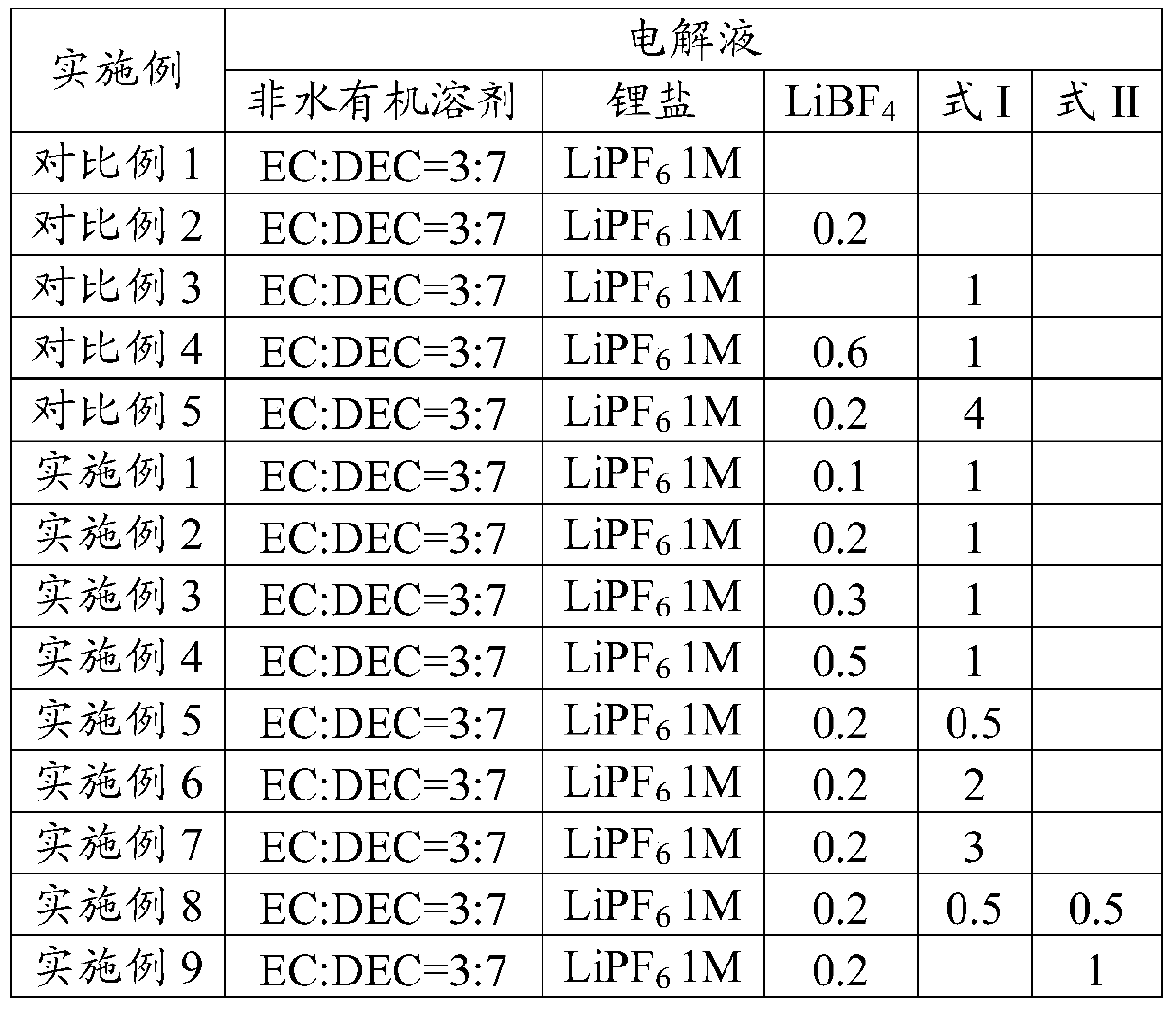Lithium-ion battery and its non-aqueous electrolyte
A non-aqueous electrolyte and lithium-ion battery technology, which is applied in the direction of secondary batteries, circuits, electrical components, etc., can solve the problems of lithium-ion battery cycle capacity retention rate decline, irreversible capacity loss, and high positive oxidation activity. High-temperature storage performance and intermittent cycle capacity retention, reduced electrochemical activity, and the effect of inhibiting oxidative decomposition
- Summary
- Abstract
- Description
- Claims
- Application Information
AI Technical Summary
Problems solved by technology
Method used
Image
Examples
Embodiment 1
[0047] Lithium-ion batteries were prepared according to the method of Comparative Example 1, the difference was only that: the non-aqueous electrolyte also contained additives, and the additive was LiBF with a mass percentage of 0.1% in the non-aqueous electrolyte 4 And the dinitrile compound with the structure of formula I in the mass percentage content of 1% in the non-aqueous electrolyte.
Embodiment 2
[0049] Lithium-ion batteries were prepared according to the method of Comparative Example 1, the difference was only that: the non-aqueous electrolyte also contained additives, and the additive was LiBF with a mass percentage of 0.2% in the non-aqueous electrolyte 4 And the dinitrile compound with the structure of formula I in the mass percentage content of 1% in the non-aqueous electrolyte.
Embodiment 3
[0051] Lithium-ion battery was prepared according to the method of comparative example 1, the difference was only: the non-aqueous electrolyte also contained additives, and the additive was LiBF with a mass percentage of 0.3% in the non-aqueous electrolyte 4 And the dinitrile compound with the structure of formula I in the mass percentage content of 1% in the non-aqueous electrolyte.
PUM
| Property | Measurement | Unit |
|---|---|---|
| thickness | aaaaa | aaaaa |
| thickness | aaaaa | aaaaa |
Abstract
Description
Claims
Application Information
 Login to View More
Login to View More - R&D
- Intellectual Property
- Life Sciences
- Materials
- Tech Scout
- Unparalleled Data Quality
- Higher Quality Content
- 60% Fewer Hallucinations
Browse by: Latest US Patents, China's latest patents, Technical Efficacy Thesaurus, Application Domain, Technology Topic, Popular Technical Reports.
© 2025 PatSnap. All rights reserved.Legal|Privacy policy|Modern Slavery Act Transparency Statement|Sitemap|About US| Contact US: help@patsnap.com



